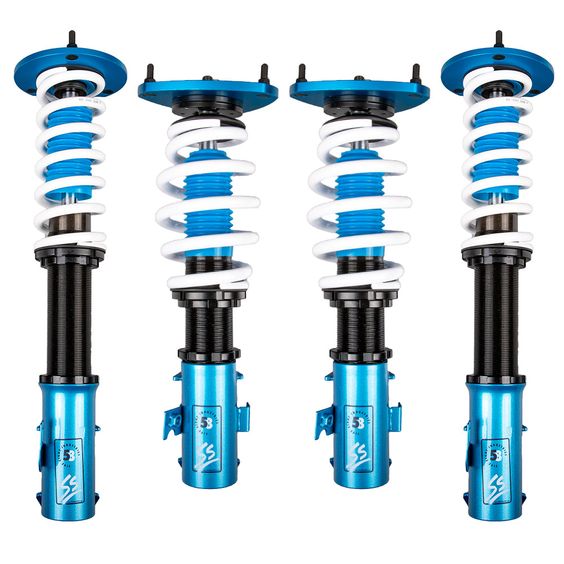|
Coilovers are a suspension system that combines a shock absorber and a spring into one unit. They are a popular aftermarket upgrade for car enthusiasts who want to improve the handling, performance, and adjustability of their vehicles. In this article, we will delve into the details of coilovers, including what they are, how they work, the types available, and their advantages and disadvantages.
What are Coilovers? A coilover is a suspension system that comprises a shock absorber, a spring, and a threaded shock body. The spring is wound around the shock body and is adjustable for preload. The threaded shock body allows for ride height adjustment by moving the spring perch up or down, which changes the distance between the spring and the shock absorber. The adjustment of the spring preload and ride height provides adjustability to the suspension system. How do Coilovers Work? Coilovers work by dampening the motion of the suspension system. The shock absorber controls the movement of the spring, and the spring resists the motion of the suspension system. When a vehicle encounters a bump, the shock absorber compresses, which compresses the spring. The compressed spring then rebounds, pushing the shock absorber back up, which causes the suspension system to rebound. This damping motion helps to keep the wheels in contact with the road surface, which improves traction, handling, and stability. Types of Coilovers There are three types of coilovers available:
Advantages of Coilovers
Disadvantages of Coilovers
Coilovers are an excellent upgrade for car enthusiasts who want to improve their vehicle's handling, adjustability, and performance. They offer several advantages, including improved handling, adjustability, and customization. However, they also have some disadvantages, including cost, comfort, and installation complexity. Understanding the types of coilovers available and their advantages and disadvantages will help you make an informed decision when upgrading your vehicle's suspension system. |
Categories
All
|
